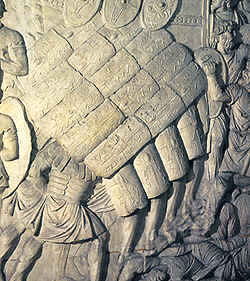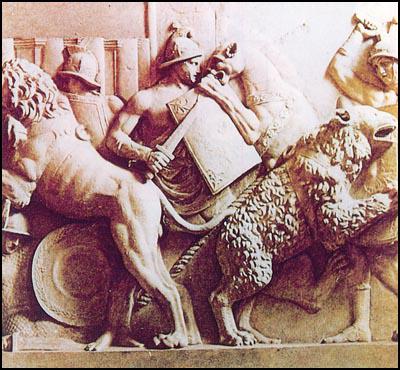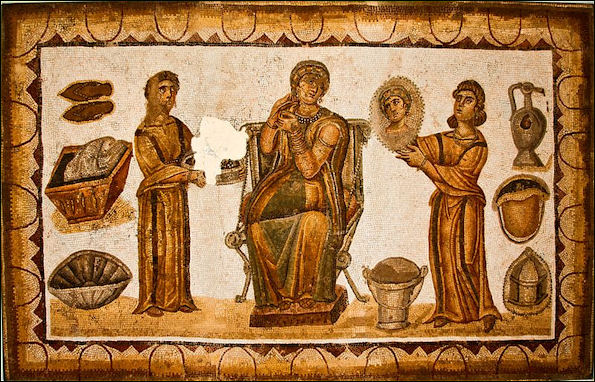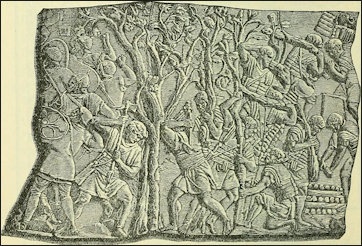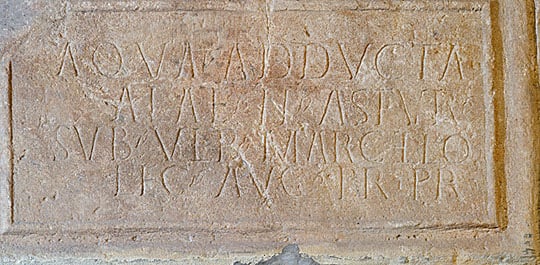Roman Army Primary Sources
If you're looking for picture and video information related to the keyword you have come to pay a visit to the ideal site. Our site gives you hints for viewing the maximum quality video and picture content, search and find more enlightening video articles and images that fit your interests.
includes one of thousands of video collections from various sources, especially Youtube, so we recommend this video for you to view. This site is for them to visit this site.

The vast majority of everything written in antiquity has perished.
Roman army primary sources. It conquered a vast empire. When an auxiliary soldier who was a recruit from conquered lands had been in the army for 25 years he could become a Roman citizen. At the time of its invasion of Britain the Roman army was the most disciplined and efficient killing machine that the ancient world had ever known. Within each century the men were further divided into.
The Roman Army was divided up into about 30 legions. General Resources Famous People World War II Britain since the 1930s The Victorians The Tudors The Saxons The Vikings Ancient Rome Celts Ancient Greece Ancient Egypt The Aztecs. The leader of the century was called a centurion. Roman weapons Legionaries carried the same weapons so they could fight together in formation.
Britons outnumber the Romans by up to 20-to-1 but the Roman soldiers are highly trained. History military primary sources Trible Library provides links to other websites to aid in research and is not responsible for the content or privacy policy of those sites. The early Roman army was the armed force of the Roman Kingdom and of the early Roman Republic. Compared with those who study modern military history historians of Roman civilization roughly 500 BCE to 500 CE have very few sources to work with.
The early Roman army was based on an annual levy. The French Army in Italy 1494 according to Matteo Maria Boiardo Warfare in the Italian city of Perugia in 1495 The Battle of Fornovo 1495 according to Alessandro Beneditti The Sack of Montopoli in Val DArno 1498 Castel Bolognese 1500 Sixteenth Century and Later Warfare. Roman soldiers used rigorous formations and clever tactics to defeat their opponents on the battlefield. Some of these historians lived at the time of the events and therefore may actually be primary sources but others especially Plutarch CE 45-125 who covers men from multiple eras lived later than the events they describe.
This lesson provides primary and secondary sources in picture format that pupils interpret to decide why the Roman army was such a successful fighting force and why they enjoyed such success against the Celts when they invaded Britain. The resources comprise a powerpoint a sheet with information on the sources it is suggested you enlarge this to A3 images of the sources to cut and stick. Late Roman and Byzantine Sources The Siege of Amida in 359 by Ammianus Marecllinus. Fordham University provides a list of links to online primary sources from the classical era.
Ancient Rome - Ancient History Sourcebook. A legion would have 800 legionnaires who would be already Roman citizens. We have breastplates greaves mighty shields with which we keep our entire bodies protected two-edged swords and instead of the spear the javelin a missile that cannot be dodged. 1a place events people and changes into correct periods of time.
These soldiers were divided into six groups of 80 and these were called centuries and were led by a centurion. The army was organised into groups of troops. One of the main reasons Rome became so powerful was because of the strength of its army. Each legion would be split up into groups called centuries.
Thanks to their famous discipline they could take up and hold positions even in the heat of battle. Its men were well-equipped and highly trained and operated in strict formation on the battlefield. The validity of the works must be treated with caution. Greek and Roman Materials - Perseus Tufts.
Primary Resources - free worksheets lesson plans and teaching ideas for primary and elementary teachers. Tweet Our Other Site. Roman weapons Army formations. Small monuments were often erected to record the achievements of units such as the completion of construction projects.
350 CE Histories. A Roman centurion leading his men. Understand that the Roman success was not all due to military prowess but a system of alliances with certain tribes against others in the interest of the Romans NC. There is no detailed census data few ancient archives and few soldiers letters home.
Each legion was made up of 10 cohorts. During this period when warfare chiefly consisted of small-scale plundering raids it has been suggested that the army followed Etruscan or Greek models of organisation and equipment. This involved the soldiers standing side by side in ranks. 30 BC We now have better arms than the barbarians.
A normal cohort contained 480 soldiers. Collection of thirty-one biographies of the Roman emperors from 117 to 284 CE. Primary Sources 1 Dionysius of Halicamassus Roman Antiquities c. Each legion was made up of between 4000 to 6000 soldiers.
The Roman army is well armed very skilled at working together and heavily protected by armour. Be able to suggest several reasons for the Roman success over the Celts. In each century were 80 soldiers. The combat formation used by the Greeks and Romans was called the phalanx.
Written by six different authors during the reigns of Diocletian and Constantine the Great. Ancient Rome The Celts Other Sections. In the early days of the Roman Republic military tactics were influenced by the methods used by the successful Greek Army. This website provides a plethora of ancient texts many in the original languages along with English Translations.
The spread of the Roman Empire was partly due to the fact that the Roman army was so well organised. The two most common sorts of inscriptions are tombstones and monuments. The soldiers were known as legionaries. Here are the names and relevant periods for some of the main ancient Latin and Greek sources for Roman history.
Be able to suggest a reason why the Roman Army overcame the Celts. Just before contact with the enemy the soldiers moved in very close together so that each mans shield helped to protect the man on his left.

